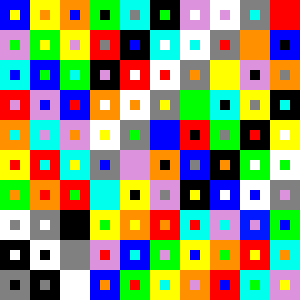Chapter 2 Vector space constructions
This chapter contains material the reader may or may not have seen. The most critical is the first section on sums and direct sums. The later two sections are more important to advanced readers.
One goal of linear algebra is to understand the properties of a linear map \(T:V\to W\) between two vector spaces. There are many ways in which to do this depending on the end goal.
One approach is try to separate the original problem into smaller subproblems. For example, it is often the case that restricted to a subspace \(U \subseteq V\text{,}\) the behavior of \(T\) is well understood. An easy instance of this is that we know exactly what \(T\) does when restricted to \(U = \ker(T)\text{.}\) If we could somehow write \(V\) as a sum of spaces, \(\ker(T) + U'\text{,}\) the job of understanding the action of \(T\) would be reduced to understanding \(T\) on the smaller subspace \(U'.\) We shall make this precise below.
In a very different direction than direct sums, let’s try to understand the image of a linear map \(T:V\to
W\text{.}\) Of course if \(T\) is injective, then there is an isomorphic copy of \(V\) sitting inside \(W.\) But if \(T\) is not injective, how do we describe the image of the map in terms of \(V?\)
Suppose \(w\) is in the image of \(T,\) say with \(T(v_0) = w\text{.}\) We characterized the inverve image, \(T^{-1}(w)\) in Equation (1.2.1) as
\begin{equation*}
T^{-1}(w) = \{v_0+k \mid k \in \ker(T)\} = v_0 +
\ker(T).
\end{equation*}
So all those vectors get mapped to the same point \(w\in
W.\) This suggests setting up an equivalence relation among the vectors in \(V,\) so that each equivalence class is in bijective correspondence with the points in the image of \(T.\) We shall make this clearer in the sections below.

